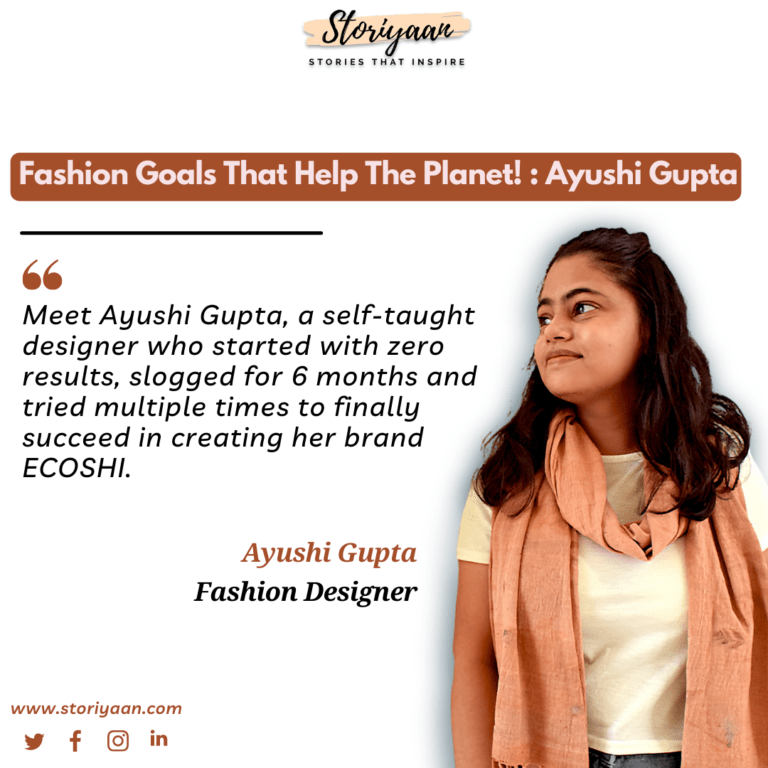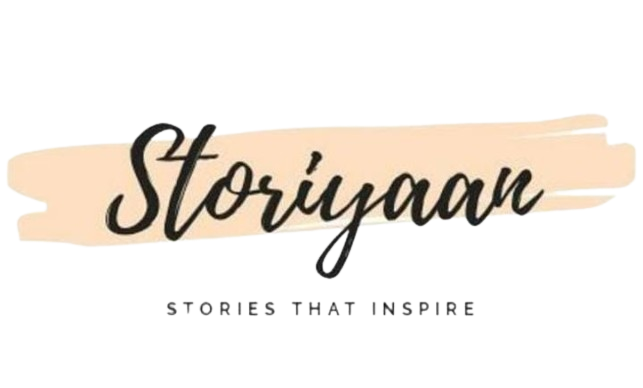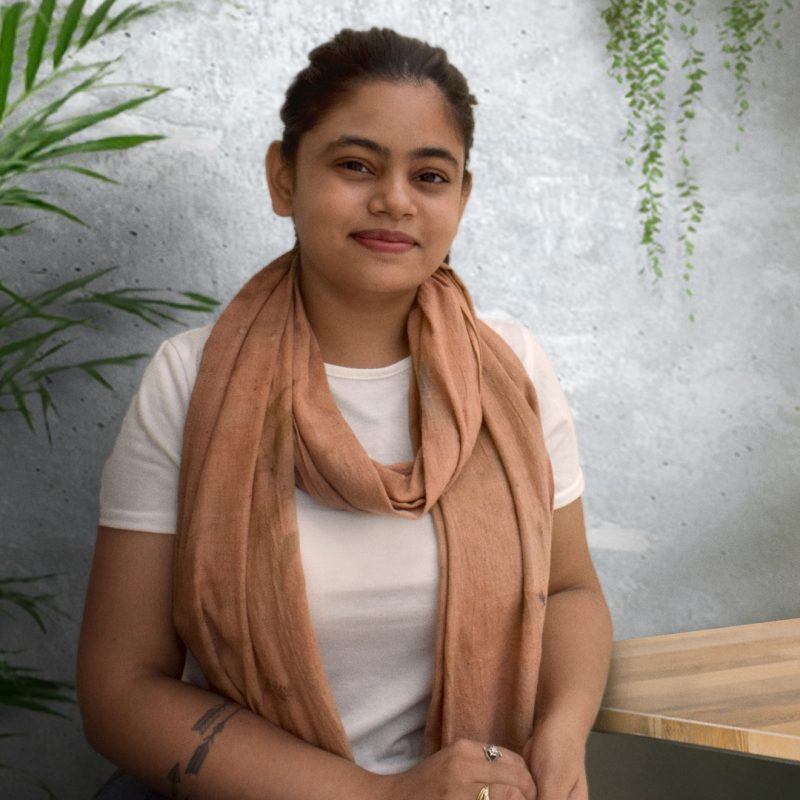Ayushi Gupta is a Fashion Designer and Founder of “Ecoshi”, a clothing brand that focuses on creating eco-friendly and sustainable clothing. She observed the rampant use of harmful and damaging production practices in the fashion industry and pledged to be the change. Ayushi Gupta started her brand to reuse, recycle, upcycle along with minimising plastic use. Moreover, Ayushi Gupta uses biodegradable materials to create her bespoke designs and every product is chemical-free. Truly, her brand is the quintessential reflection of her love for nature and fashion. Dig deeper into Ayushi’s journey into sustainable fashion in this freewheeling conversation with Storiyaan.

Ayushi Gupta: Fashion Goals That Help The Planet
Interview
Questions and answers
Can you tell us the story that enabled you to realize and give wings to your creative flair as a fashion designer with a cause?
I have been working with many textile manufacturing companies. I have observed how the uses of chemical dyes are harmful to the environment, consumers and workers. Thus, when the lockdown hit and I left my job, I pledged to reduce, reuse, recycle, and upcycle along with minimizing the use of plastic to none.
When did you first encounter the art of creating sustainable fashion and what about it appealed to you in the first place?
I was introduced to the technique by a professor during my masters. That sparked my curiosity and I began my in-depth research. The therapeutic process of making these prints and leaving everything else to nature appealed to me the most. It helped me in my hard times and helps the environment profusely.
How has the panorama of the fashion industry changed in the past years?
Although the industry is slowly rising to the need for sustainable fashion the acceptability is still in its nascent stage. Simultaneously, the rise in fast fashion means a lot of brands opt for mass production due to the surety and scope. But the change is happening and progress is being made.
You’ve had a first-hand view of how chemical dyes affect the environment, consumers and workers. What, in your opinion, are some steps that can be taken to raise awareness against this?
The onus lies on the companies to provide safe working conditions and tools for their workers. In addition, ethical exhaust systems and waste disposal practices for the infrastructure should be implemented. The customers on the other hand can opt and create demand for sustainable clothes and hold their clothing companies accountable for the same.
Where do you find inspiration for new collections and how does it help you fuel your creativity?
Generally, I let nature do all the work of creating the new designs. I focus on compositions and planning of the outcome. Moreover, I still research new methods and colours and try them in my designs.
Is there a difference between the Indian market and the rest of the world when it comes to people’s acceptance of sustainability/sustainably produced fashion? If so, why?
Yes, I think the Indian market works in its way. The cost of the product plays a huge role in the Indian market. Mass-produced goods are cheaper and thus generates more demand. This further disincentivize the companies from choosing eco-friendly, sustainable production practices.
What were some of the initial challenges that you had to face to promote your brand and how do you deal with large orders within a short period when the orders are urgent?
The biggest challenge has been to identify and target our customer base. Further, due to the lack of awareness, we also need to propagate the technique among them for creating customer awareness. We do burn the midnight lamp for meeting our customer demands on time. Usually, the parcels are prepared for shipping in the morning, dyeing and printing consume the day and the nights are for journals.
How did you ensure that no plastic was used in the production while keeping your products within a reasonable price margin?
It is easier than it sounds. We go through several samples of raw materials according to the place, material, and manufacturer before the final selection. Moreover, plastic-free alternatives are widely available and lay no extra costs on the production and packaging.
Several eco-friendly brands also promote upcycling of products. What is the USP of “ECOSHI” that makes it stand out among the rest?
Firstly, our prices are much lower than other brands in the market. In addition, the unique designs and the wide choice of clothing is our USP. We are also constantly innovating and introducing newer designs. And we also follow a No Wastage Policy as we use every inch of our materials.
Your brand reuses temple and kitchen waste such as flowers, leaves, peels and other natural dyes to make your products. How do you ensure the longevity of such biodegradable items?
We use good quality materials for the best colour. Thus we ensure the colour stays by pretreating the base, followed by post-treatment after the printing or dying. Apart from this, we provide care tips so that the customer can take the best care of their clothes.
What do you find to be the most satisfying aspect of running a business?
The most satisfying aspect of running a business is that you are your boss. I am independent and through my work, I also contribute to society and the environment at large. Hence, I can never get bored of this.
Quick 5
1. Your favourite designer – Irit Dulman
2. Any particular fashion trend that you despise – None
3. Your greatest motivator – Experimenting with nature
4. One fabric that is the worst for the environment – Polyester
5. Your best-selling product at present – Bandana

